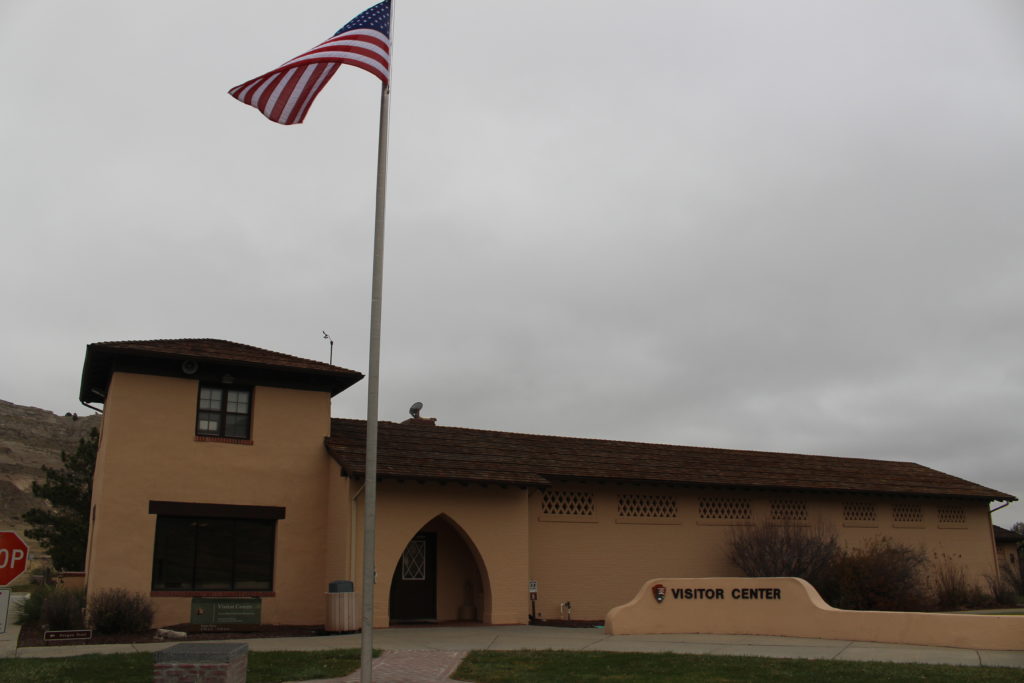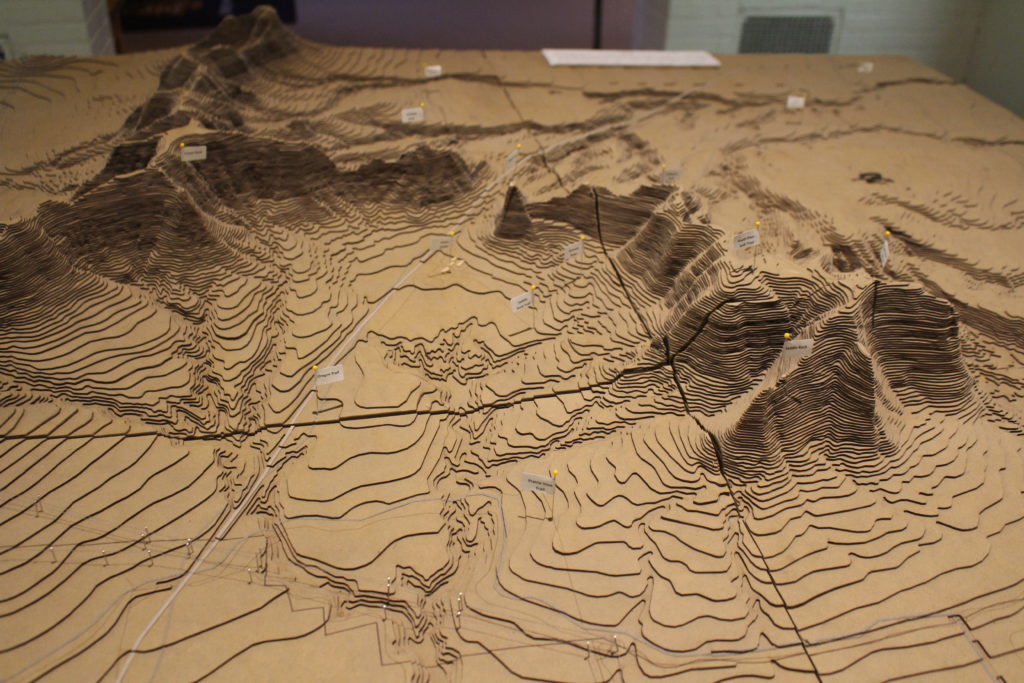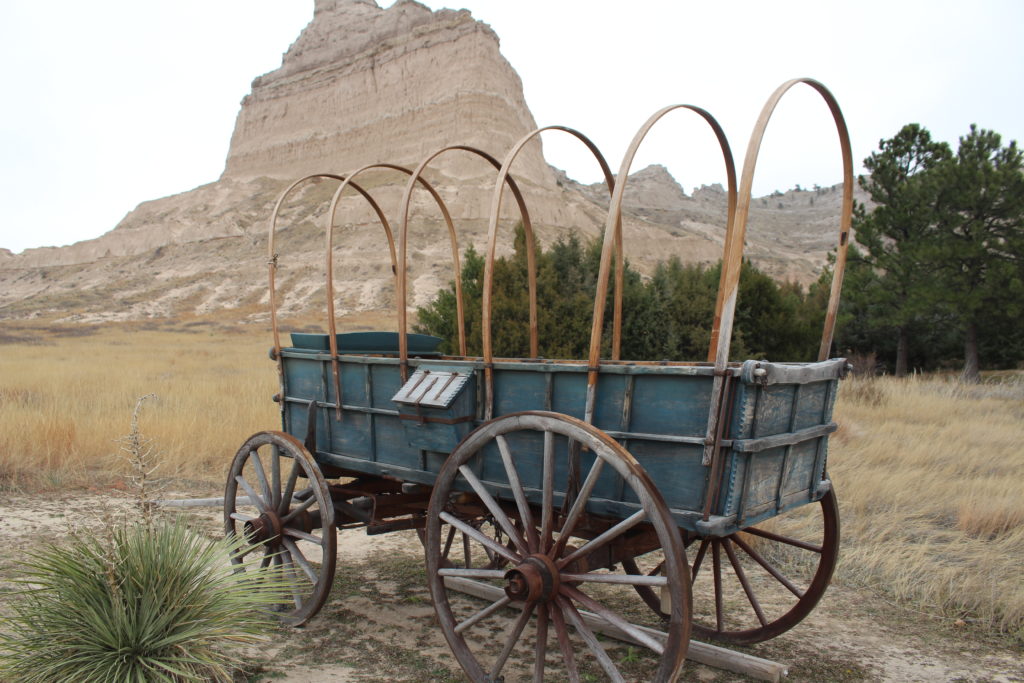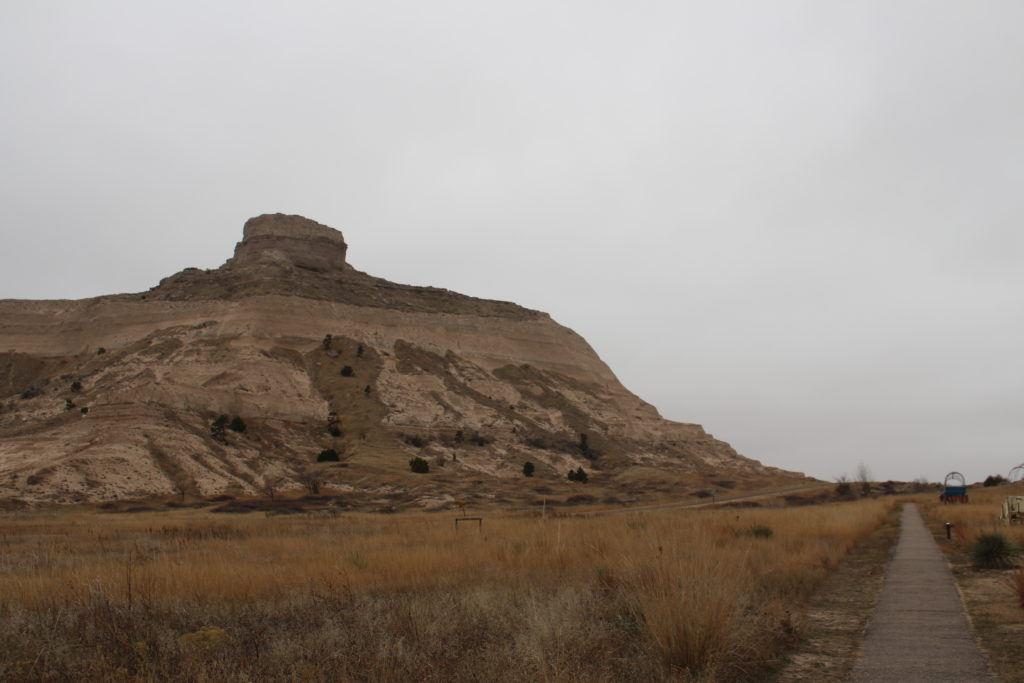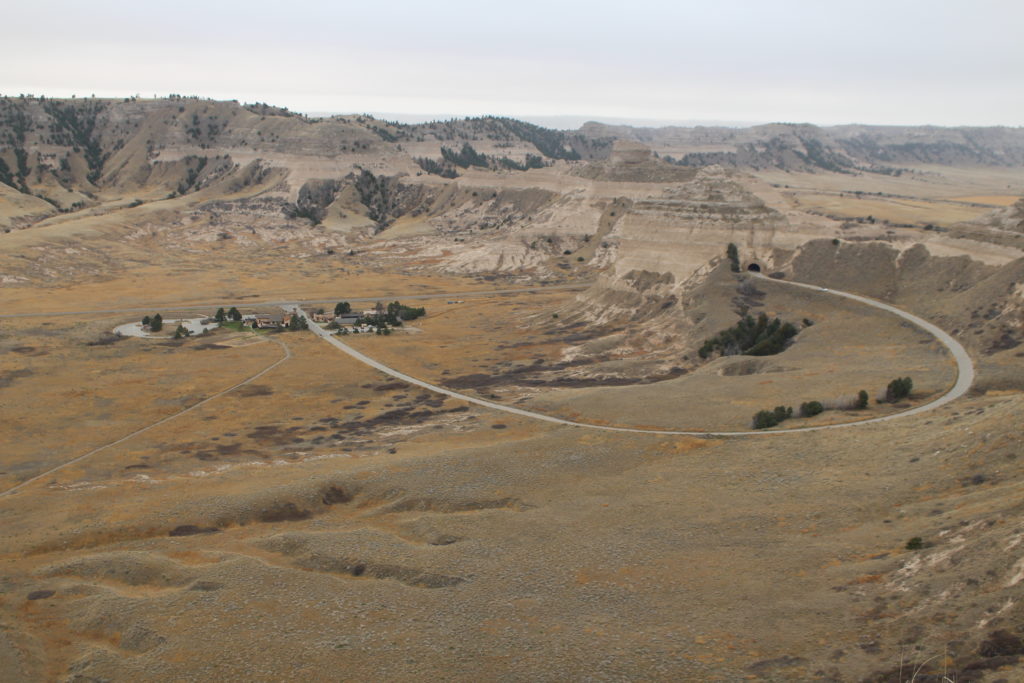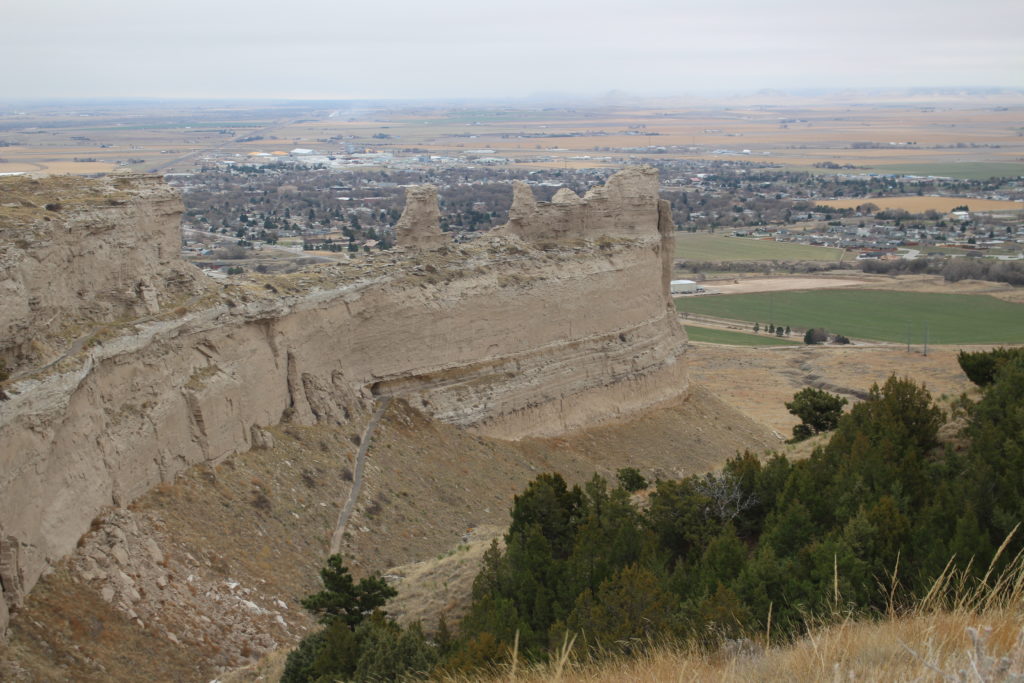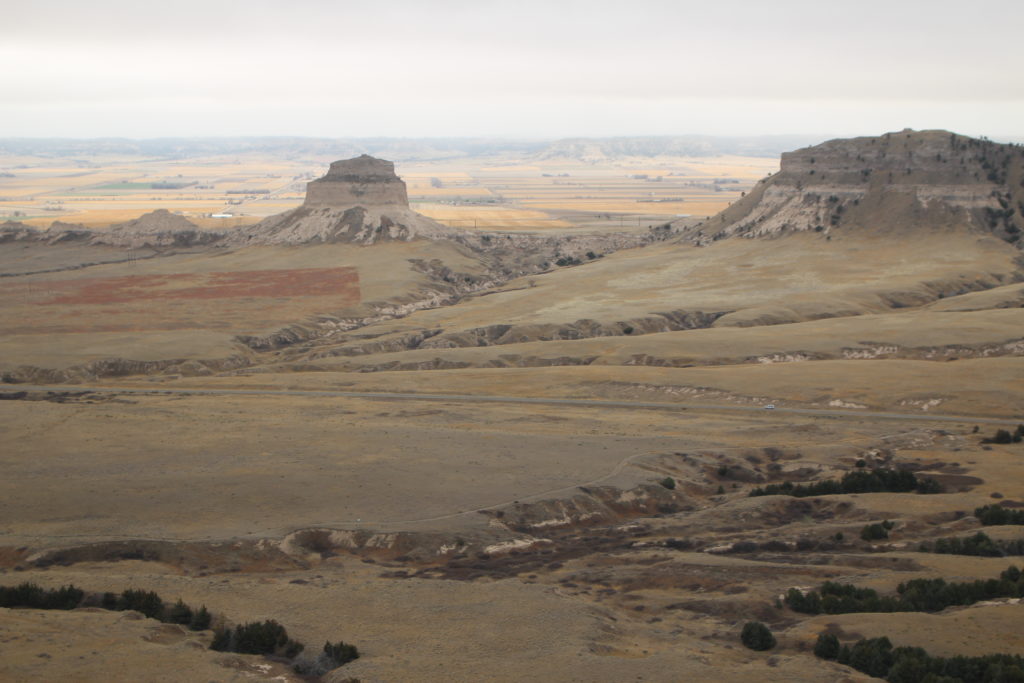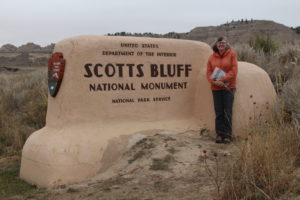 Scotts Bluff National Monument was our final National Park site in Nebraska. After the wind at Fort Laramie and the snow at Agate Fossil Beds, we were hoping for a warmer welcome at Scotts Bluff.
Scotts Bluff National Monument was our final National Park site in Nebraska. After the wind at Fort Laramie and the snow at Agate Fossil Beds, we were hoping for a warmer welcome at Scotts Bluff.
Scotts Bluff towers 800 feet above the North Platte River Valley and can be seen for miles as you approach. Because of this, the Bluff was a landmark for Native Americans and travelers along the Oregon, California, and Mormon trails. The limestone monuments of Eagle, Sentinel, Crown, Dome, and Saddle Rocks point the way through the area toward the west.
When we went to Scotts Bluff National Monument, we headed first to the Visitors Center. We were the only visitors on the cold, windy afternoon so we took our time. Tom and I watched a movie about the bluff, then studied a topological map of the area. We checked out the museum but it was underwhelming, primarily because they are getting ready for all new exhibits. We also talked to a ranger for a while who gave us several good flyers on hiking trails, the five rocks of Scotts Bluff, and a Mormon Odometer.
After our thorough visit to the Visitors Center, we headed up Scotts Bluff to the overlooks. The views from the top were amazing! The wind died down enough that we could enjoy walking the two overlook trails. The road to the top of the bluff is narrow and winding and passes through two tunnels. Fortunately we didn’t meet any other cars coming or going.
Between 1841 and 1869, 350,000 emigrants passed through Mitchell Pass by the great rocks. Some of them came in Murphy Wagons, some in Studebakers, and others – especially Mormons – pulled handcarts. Before these emigrants, countless Native Americans passed through the area walking, riding horses and pulling travois.
Tom and I enjoyed our visit to Scotts Bluff National Monument. We were glad we were able to drive there in our truck instead of using the rocks as a signpost while riding in a wagon. The truck travels faster and is much more comfortable.

